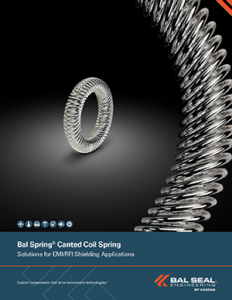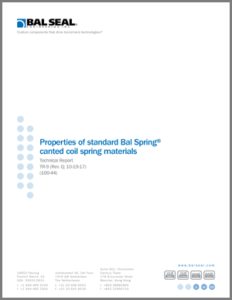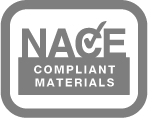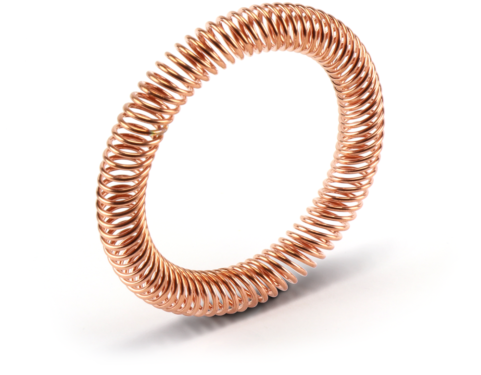
With the Bal Spring® canted coil spring, you can protect sensitive electronics in your designs from the harmful effects of conducted or radiated electromagnetic interference (EMI) and radio frequency interference (RFI). Our spring’s independent coils, which serve as multiple contact points for optimal conductivity in shielding applications, ensure consistent, reliable contact—even under shock and vibration. The Bal Spring provides superior attenuation across a broad EMI spectrum, but it’s particularly effective in high-frequency, small-package applications. It’s the ideal choice for designers who want to advance the performance of their equipment while reducing size, weight, and system complexity.
EMI Shielding Spring Mounting Configurations
For EMI/RFI shielding applications, The Bal Spring®canted coil spring can be supplied in welded rings or lengths. Rings are typically installed in either housing-mounted or piston-mounted configurations . Spring lengths can be engineered to self-retain, or used with other fastening technologies. The Bal Spring can be paired with a variety of groove shapes to optimize shielding effectiveness. Here are some examples.
Rectangular Groove
Easiest to machine
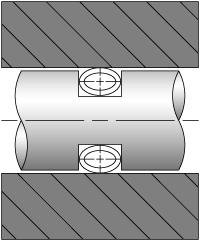
Rectangular Piston
Piston Mounted Welded Ring Spring in Rectangular Groove
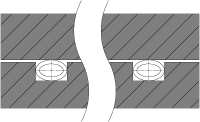
Rectangular Plate
Length of Spring in a Plate Rectangular Groove
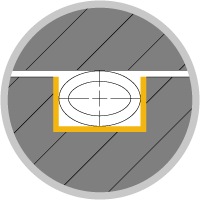
Groove Detail View
Dovetail Groove
Best for retaining spring
in place
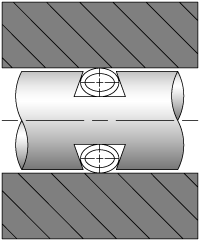
Dovetail Piston
Piston Mounted Welded Ring Spring in Dovetail Groove
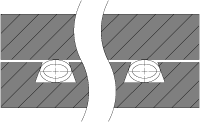
Dovetail Plate
Length of Spring in a Plate
Dovetail Groove
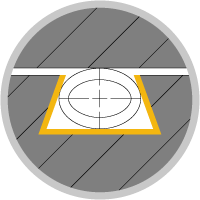
Groove Detail View
Tapered Groove
Best control of forces
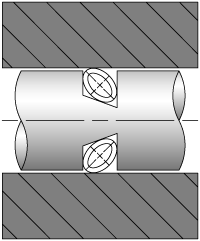
Tapered Piston
Piston Mounted Welded Ring Spring in Tapered Groove
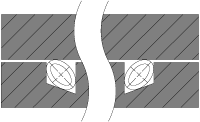
Tapered Plate
Length of Spring in a Plate
Tapered Groove
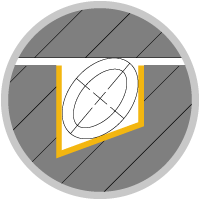
Groove Detail View
V Groove
Best conductivity
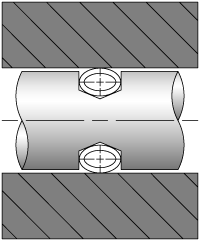
V Piston
Piston Mounted Welded Ring Spring in V Groove
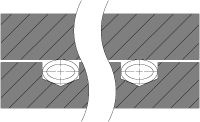
V Plate
Length of spring in a Plate
V Groove
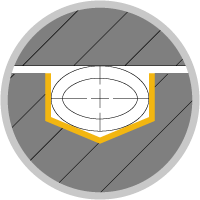
Groove Detail View
EMI Shielding Spring Performance
Unlike typical EMI shielding technologies, our Bal Spring canted coil spring exerts a near-constant force across the working deflection range, and its force remains consistent–even under extreme temperature variations. It resists compression set, and its individual coils compensate for misalignment, tolerance variations, and mating surface irregularities. For applications requiring both shielding and mechanical connecting, we can adjust spring groove, spring size, wire diameter and other characteristics to precisely control the force it takes to latch, lock, hold, connect, and disconnect.
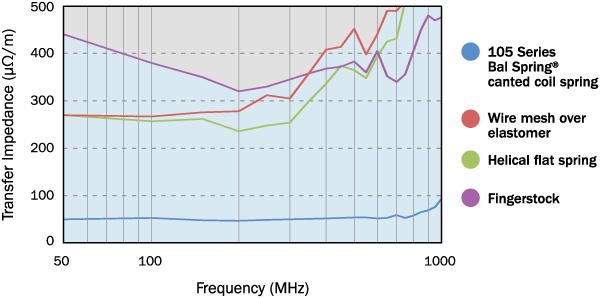
Transfer Impedance of Canted Coil Spring
vs. Other Shielding Methods
And here’s a look at how our spring performs in a range of frequencies.
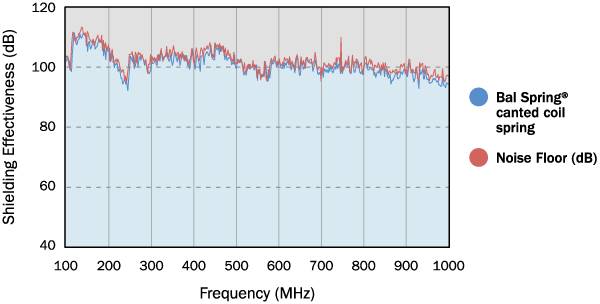
100 MHz-1 GHz
Shielding Effectiveness vs. Frequency
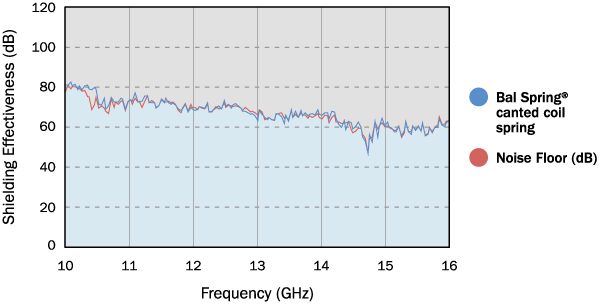
10-16 GHz
Shielding Effectiveness vs. Frequency
These graphs illustrate the Bal Spring’s shielding effectiveness at frequency ranges from 100 MHz-1 GHz and 10-16 GHz. Each graph includes the noise floor for comparison, showing how closely the Bal Spring matches the noise floor throughout the entire frequency range. Tests were performed by an accredited third party following IEC 61726 Standard, using a 50-Ω characteristic impedance coaxial connector with an overall diameter of 0.725. Note: Shielding effectiveness is highly dependent upon connector design and configuration.
EMI Shielding Spring Force
Many design factors, including wire material, wire diameter, coil height, spring force, and plating thickness, contribute to the performance of our Bal Spring® canted coil spring. We can precisely control each of these to engineer a spring that delivers the level of shielding you need. Here’s a look at how the Bal Spring stacks up to other shielding technologies.
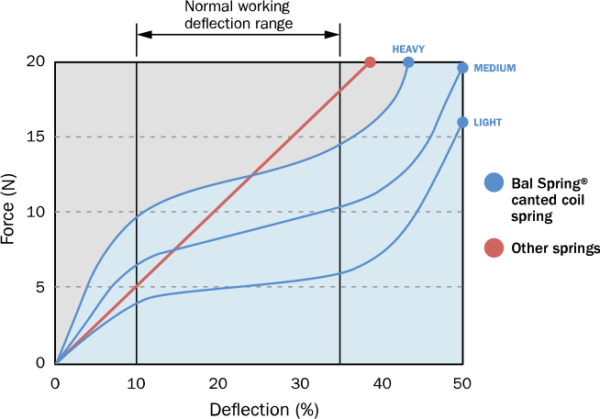

EMI Shielding Spring Materials & Plating
Bal Spring® canted coil springs for EMI shielding are precision-manufactured from premium copper alloy and stainless steel base wire materials, chosen for their excellent combination of mechanical and electrical properties. Our copper alloys are conductive enough to be used unplated in many applications. The performance of our stainless steel materials, which offer a higher force-per-unit compression value than copper in the same spring dimension, can be enhanced by plating with a more conductive metal.
Bal Spring wire materials include:
- STAINLESS STEEL (302, 316, 316L)
- BERYLLIUM-COPPER
- ZIRCONIUM-COPPER
Plating Options Include:
- GOLD
- SILVER
- NICKEL
- TIN
Plating can make the Bal Spring more efficient in humid or corrosive environments, or in any application that calls for higher conductivity. We can supply springs plated to MIL standards or other specifications. While silver is usually the first choice for high conductivity requirements, it’s also important to consider corrosion and potential and wear characteristics. We apply protective coatings to our silver-plated Bal Spring canted coil springs for an added level of corrosion resistance.
EMI Shielding Spring Sizes
Our Bal Spring canted coil springs are available in lengths (for simple or complex groove configurations) and welded rings from 0.030” (.76mm) ID. Since every spring is designed to meet the unique requirements of your application, we don’t stock a “standard” size and type. But we do maintain a database of commonly-requested diameters and cross-sections, which can serve as a baseline for streamlined customization.

Images are provided solely as an illustration of common spring dimensions. Spring properties, including wire diameter, wire material, coil width, coil height, coil cant angle, spring ID/OD, and plating can be precisely customized for optimal performance.
EMI Shielding Spring Orientation
Radial Spring
Compression force of a radial canted coil spring is along the radius of the arc or ring, perpendicular to the centerline.

Axial Spring
Compression force of an axial canted coil spring is along the axis of the arc or ring, parallel to the centerline.

Service conditions, spring configuration (length or ring), and other factors can influence this design choice. Our engineers will help you to deternine which spring orientation desivers the best performance.
One Component, Three Functions
Some designers use the Bal Spring® canted coil spring to mechanically latch, lock, or hold critical machine components. Some use it to shield against EMI/RFI. Others leverage our spring’s ability to electrically conduct and ground. No matter how you choose to use it, you’ll increase performance, improve reliability, and gain a competitive edge.

